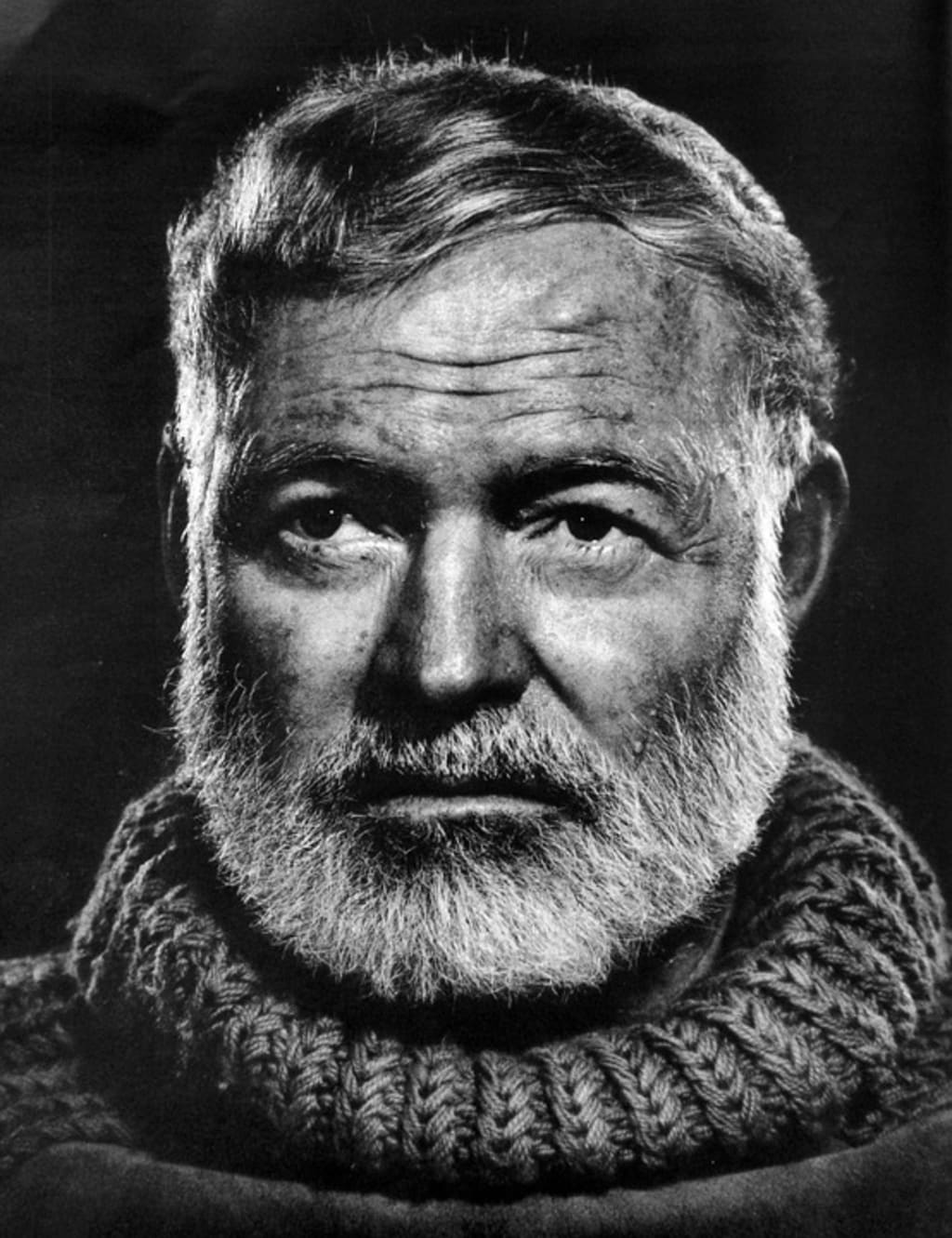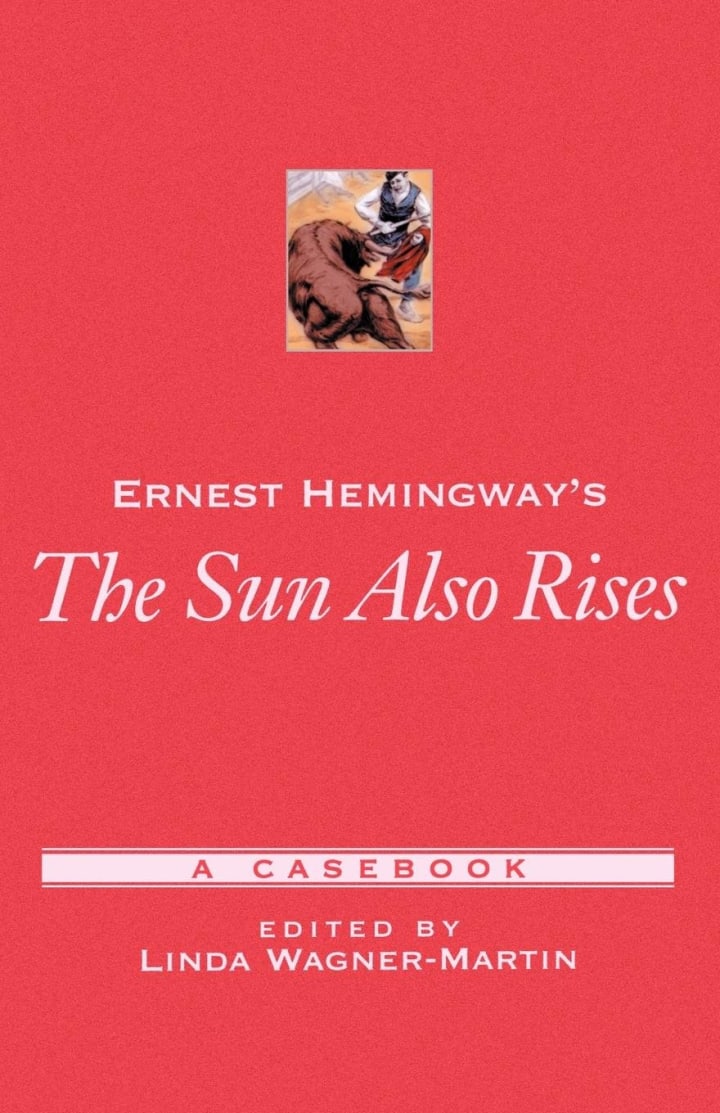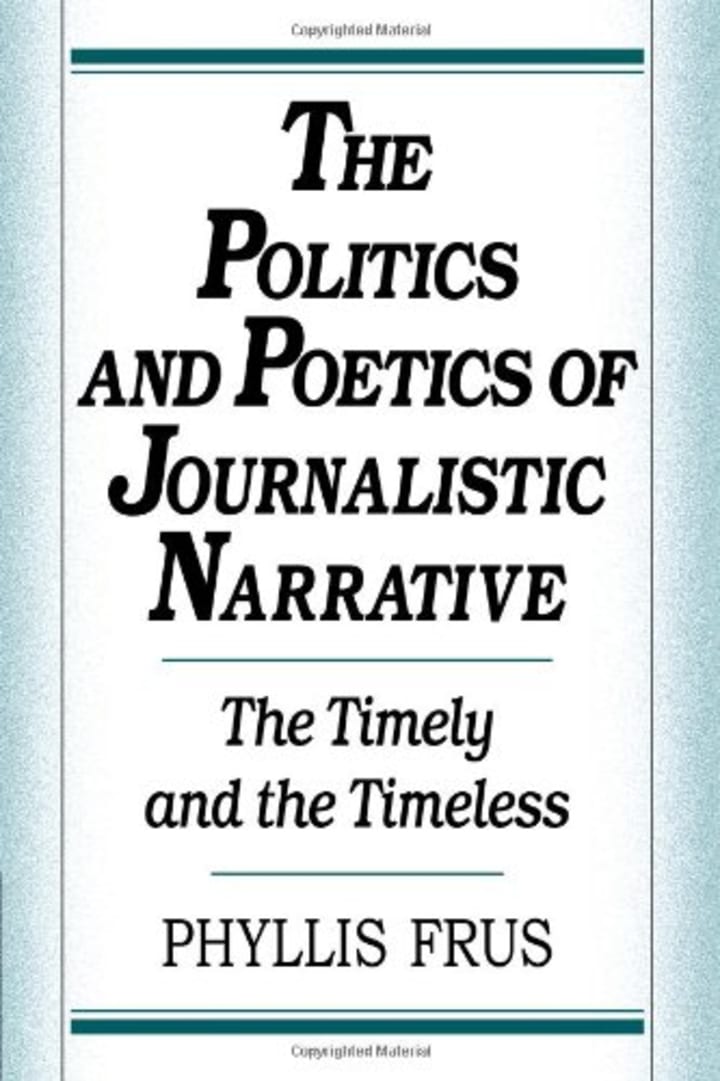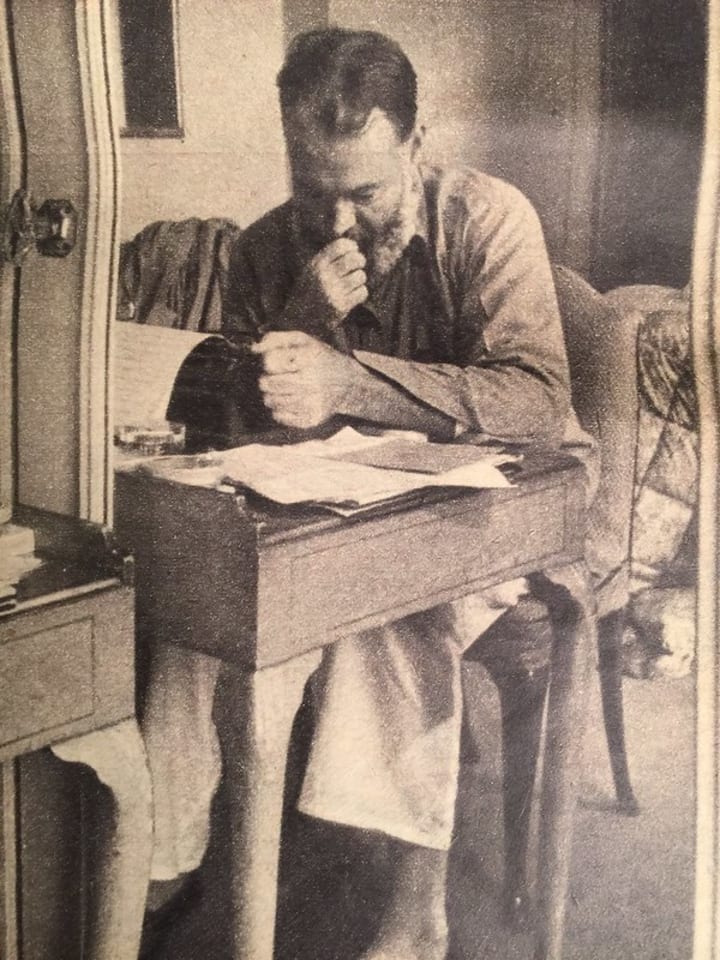To What Extent Are Journalists and Journalistic Practice Important in the Fiction of Ernest Hemingway?
An essay

Ernest Hemingway is perhaps one of the most famous American writers of his time. Before becoming a writer, however, Hemingway was a journalist and a war correspondent (Meyers 1982:1). This essay will focus on the extent to which journalists and journalistic practice are important in Hemingway’s fictional work The Sun Also Rises (1926).

Richard Keeble acknowledges that journalism and literature are generally classified as high and low culture respectively by literary critics (2007:2). He cites Richard Ingram, who comments that journalism is considered to be a ‘dirty word’ and journalists ‘inferior species’ in comparison to novelists or historians (2007:2). Doug Underwood reveals_the notion of literary writing being considered superior to journalistic writing was prevalent among writers in the twentieth century (2008:138). Ernest Hemingway was one of the journalist-writers whose literary writing became popular and received critical acclaim. His works were considered for their psychological elements and stylistically complex themes (Underwood 2008-138).
I was astonished to learn that journalism was considered low culture in the literary world. In the time when realism was at its peak, the literary world was rejecting the importance of journalism. To get more understanding on the matter, I continued my research.

Phyllis Frus (1994:1) discusses certain aspects of journalism that distinguishes it from literature. She states, journalism is dependent on events that bring it to life. Once the importance of the event fades, it is primarily useful for historians researching on the subject. It is due to this ephemeral nature of journalism, that it is shelved. Furthermore, Frus states that journalism is mainly interested in ‘local matters’ whereas literature produces ‘universal truths’ (1994:1). She adds, when literature is classified as ‘fiction,’ a journalistic piece certainly forms a different category, as journalists take an oath to report an event truthfully (1994:2). Since the pragmatic function of journalism is to give information, the concept of fiction being transcended cannot be applied to journalistic pieces.
Of course, this knowledge deepened my confusion about journalism being treated as second class. Whilst this literary form can be shelved, it is being used for the purpose of studying history, much like the fictional books. On the other hand, it is highlighted that unlike literary novels, journalism does not or at least must not indulge in fictionalising its content. Surely this means it would be appropriate to use journalistic pieces to learn more about the period, socio-political and economic factors in the history? This led to my further investigation, especially through studying Hemingway.

I found that journalism and literature are different in the way that they are approached as stated by Frus (1994:2). Whilst the former is formal and mundane, the latter is creative and imaginative. Journalism takes an objective lens, whereas literature takes a subjective stance. The former is transparent, and the latter is self-conscious.

Among the generalised characterisation of journalism and literature, Frus notes that the turn of literary history found ‘realism’ as a subgenre of fiction (1994:53). Hemingway is listed among the writers who are believed to have founded the sub-genre. The journalistic practice of ‘observation’ and ‘impersonal narration,’ is applied to their fiction by realist writers, thus, Frus notes that journalism can be considered as the ‘training ground’ for these writers (1994:53). She lists the defining aspects of realism such as importance of imagery, consistent point of view, separation of the spectator and the observed, and avoiding interference of the author.
Ernest Hemingway gave an interview to The Paris Review (2004). When he was asked if he would recommend newspaper work to young writers, and his opinion on the training he received in Kansa City Star, he commented, ‘Newspaper work will not harm a young writer, and could help him if he gets out of it in time,’ (2004:12). On being asked whether he observed constantly to use his observation in his writing, Hemingway stated, ‘If a writer stops observing, he is finished,’ (2004:25). He elaborated that a writer may not observe consciously, however whatever he/she sees and knows can be used in some way or other. Hemingway used ‘iceberg theory,’ which consisted of seven-eighths of the story that was never shown, and on the tip of the iceberg were the aspects considered most necessary for the story (2004:26). Hemingway’s knowledge on a subject wasn’t revealed in entirety to the reader, however, the reader was expected to read between the lines to get the full essence of the fictional work.
Lisa Tyler states that apart from influencing his writing style, journalism also helped Hemingway in getting some subject matter that he later explored in his fiction (2011:16). Underwood affirms that Hemingway, in his early writing, took great care to observe his daily chores to understand ‘the feeling’ of an activity (2008:139). Frus highlights that in the 1920s, Hemingway practiced both forms of writing, that is fiction and journalism, where the latter influenced his fictional works (1994:57). She claims Hemingway’s style to be an exemplary example of the birth of realism and modernist literature.
The Sun Also Rises (1926) is one of Hemingway’s earliest works of fiction. David Humphries highlights that Hemingway’s early fiction, especially The Sun Also Rises shows a lot of influences of journalism beyond formality and style (2006: 83). Hemingway explores the ways in which a single reporter can act as an archetypal figure, his own idiosyncratic engagement with the norms of journalism, and reveals provocative concepts of language, identity, and community within his fiction. In The Sun Also Rises, Jake Barnes is a journalist who is used by Hemingway as a representative figure. Jake acts as the narrator of the novel. According to Humphries, as Jake aspires to be a novelist, he portrays the constitution of language and identity through the interrelation of facts and fiction (2006:83). Humphries evaluates that the problems around participatory reporting and the professional guidelines of journalism provides Hemingway with the base of showcasing Jake’s understanding of language and community (2006:84).
Doug Underwood identifies that Jake Barnes observes people, describes their actions in the way he encounters them, and conveys his subjective feelings on their interaction (2013:128). Jake’s subjective feeling about Mike and Cohn’s fight can be taken as an example, ‘I wished Mike would not behave so terribly to Cohn, though… I wished he would not do it, though, because afterward it made me disgusted at myself,’ (Hemingway 1926:137). For the majority of the novel though, Jake remains reserved of his emotions, and thus, outwardly he seems like a flat character (Underwood 2013:128). I believe that Jake embodies the journalistic practices by remaining objective, reserved, and always observant. An example of Jake’s repressed emotions can be seen in the following extract, ‘I turned off the light and tried to go to sleep… The hell there isn't!’ (Hemingway 1926: 136).

Lisa Tyler states that Jake is described as a ‘stoic character,’ however she emphasises that there are moments within the narrative where he breaks down due to self-pity (2011: 46). This is true for the following extract when Jake is in his room at night, ‘I never used to realize it, I guess… Oh, it was swell advice. Try and take it sometime. Try and take it.’ (Hemingway 1926:35). In these moments, Jake has broken free from his journalistic values, much like Hemingway. I feel that Hemingway is almost using this character to show the limitations and the tiresome journalistic approach that he had to use in his early career as a writer.
Hemingway believed in reconstructing scenes, people, and dialogue to achieve deeper truths of human interactions, which is where he thought the core dynamics of life were (Underwood 2013:129). He uses Jake to do journalistic reportage of the festival, for instance, ‘At noon of Sunday, the 6th of July, the fiesta exploded… Late in the fiesta it would not matter what they paid, nor where they bought,’ (Hemingway 1926:140). He also used the style to narrate interactions of his friends, for example ‘I heard Brett and Robert Cohn come up the stairs. Cohn said good night outside the door and went on up to his room... I heard them laugh,’ (Hemingway 1926: 136) However, it is done in a way that one can explore beyond the surface elements of the narrative, and understand the deeper themes introduced within the text. Underwood states that Hemingway blends his artistic insight with the journalistic writing style through Jake’s reportage and ‘objective’ point of view in narrating the text (2006:129). This allows the reader to actively participate within the narrative, and form conclusions about the feelings of other characters in the story.

Underwood quotes Fishkin to show the famous style sheet by Kansas City Star that urged journalists to ‘Use short first paragraphs. Use vigorous English. Be positive, not negative’ (2008: 59). Hemingway uses this style through Jake’s point of view for instance when he describes Brett, ‘Brett was damned good-looking… She was built with curves like the hull of a racing yacht, and you missed none of it with that wool jersey' (Hemingway 1926:27).
Phyllis Frus suggests that when looking at Hemingway’s journalism, and comparing it to his fiction in the 1920s, one could see that he indeed took his fiction more seriously (1994: 60). Frus highlights that many critics look at Hemingway’s journalism as a part of a large group and conclude the objectivity in his journalistic pieces (1994: 60). However, she suggests considering that the pieces that Hemingway wrote in the twenties are classified as satire, irony, parody, and so on. These pieces seem too personal, and one reason for this can be that Hemingway wrote feature articles and not straight news around the 1920s. The Star wanted works that were lively, subjective, and entertaining. Underwood notes that there were some journalistic pieces from the 1920s that Hemingway had directly used in his fiction without editing them to fit the style.
David Humphries states that Hemingway’s reporting for the Toronto Star shows that he developed ‘newspaper style’, whilst writing fiction (2006:85). Humphries sign posts that in the 1920s and 1930s journalists started questioning ‘objectivity’ in journalism and facts obtained through objectivity (2006: 108). The journalists felt that the experience of the reporter was also an important aspect of factuality. Hemingway uses Jake’s first-person narrative to immerse the reader within the text, to question the issues of journalism, and to find nuances of fact and fiction (Humphries 2006:108). Jake’s presence in every single scene is Hemingway’s attempt at accurately describing his experiences. Humphries emphasises that through Jake’s immersive perspective, Hemingway explores the reporter’s observations and experiences, thus looking at the language of fact and fiction in a different light. Jake’s description of Paris for instance shows his experience within the city, ‘The taxi went up the hill, passed the lighted square, then on into the dark, still climbing, then leveled out onto a dark street behind St. Etienne du Mont, went smoothly down the asphalt, passed the trees, and the standing bus at the Place de la Contrescarpe, then turned onto the cobbles of the Rue Mouffetard. There were lighted bars and late open shops on each side of the street,’ (Hemingway 1926:30).

Humphries further suggests that Hemingway’s attempt at portraying subjectivity within his story is not acknowledged by critics (2006:109). A reason for this is that it is obscured by Jake’s wound from the war and his affection towards Brett. Critics fall prey to the notion that Jake acts as an objective reporter due to his affection, jealousy, and impotency. One will notice this in the following extract, ‘At dinner that night we found that Robert Cohn had taken a bath, had had a shave and a haircut, and a shampoo, and something put on his hair afterward to make it stay down… I said we would be right back,’ (Hemingway 1926:93).
However, Humphries opposes this idea by stating that Jake’s wound enables him to embody his role as an observer, and prevents him from mingling into the lives of other characters too much (2006:109). He further elaborates that Jake, in fact, not only observes these characters, but manipulates them into forming major plot developments within the novel. He does this by introducing Brett and Cohn, then inviting all his friends to Spain, and later introducing Brett to Pedro (Humphries 2006:109).
Humphries presents that the early version of The Sun Also Rises shows that Jake is aware of his position as a reporter and his involvement within the story (2006:110). In the early draft of the second chapter of the novel, Jake directly addresses the reader, and explains his position, the literary method used within the narrative, and his reluctance to narrate the events in first-person narrative. This however, was removed by Hemingway at a later stage. In the chapter, Jake acknowledges that narrating the incidents of his subjects certainly makes him a character too, and demonstrates his ‘hard-boiled-sarcasm,’ (Humphries 2006:110). However, Jake does not make such obvious confessions in the published book. Humphries points that reading the analysis, which claim that Jake is completely detached, could be the only reason for obscuring the fact that he increasingly becomes involved within the narrative. Jake stays in touch with the narrative due to his role as a reporter and his affection for Brett. He can neither forget his desire for Lady Brett nor the wound from the war. Thus, Humphries states that Jake does not become a ‘camera lens’ in the narrative, but instead embodies his role entirely, and reports the account of his subjects, his inevitable involvement as an observer (2006:110).
Furthermore, Humphries reveals that although Hemingway removed the details of Jake’s overt role of journalism, the extract was intact until the galley stage (2006:111). In the passages that were later deleted, Jake confesses that he likes his position as a journalist, and implies that he works on a lower pay because he likes the job. Jake describes his writing style and asserts that he is inclined to write novels, however, is self-conscious of his journalistic style. In the early draft of The Sun Also Rises Hemingway had written as the implied author of the novel.
Much of these extracts were removed after the feedback that Hemingway received from F. Scott Fitzgerald. Humphries adds that the removal of theses extracts has given critics an opportunity to analyse the narrative in a different angle (2006:112). He states that the critics frequently distance their analysis from acknowledging the significant role journalism plays within the narrative. He cites Svaboda, who states that, although the opening of the novel is a journalistic account, ‘in the rest of the original draft, journalism rapidly turns to fiction,’ (Humphries 2006:112). Humphries believes that by distancing the narrative from journalism, critics fail to recognise Jake’s role, and in turn the role of journalism within the narrative.
Humphries comments that in the published version of the novel there are instances where it is explicitly expressed that Jake is a journalist. He is in fact the only character with a regular income job. It is implied to the reader that Jake works as a journalist throughout the narrative. An instance of this is in the beginning of the novel where Jake explicitly reveals that he is a journalist, ‘I had discovered that was the best way to get rid of friends. Once you had a drink all you had to say was: "Well, I've got to get back and get off some cables," and it was done. It is very important to discover graceful exits like that in the newspaper business, where it is such an important part of the ethics that you should never seem to be working,’ (Hemingway 1926:17)
Hemingway showed crossover of his aesthetic style in both journalism and fiction. This interrelation is visible in The Sun Also Rises through Jake’s point of view. Hemingway uses a journalist as a representative figure in his novel, and still manages to show his opinion of literary superiority by showing that the character is an aspiring fictional-writer. His opinion on objectivity and truth have also been explored within his journalism and in The Sun Also Rises through Jake Barnes. In conclusion it can be noted that although Hemingway used journalism as a training ground for his fictional writing. He not only did it by using the professional guidelines that were to be followed for writing formal news, but also by exploring his artistic style. Hemingway also explored ‘objectivity’ and ‘the report of the reporter’ to understand fact in fiction within The Sun Also Rises.

About the Creator
Aarushi Shetty
MA Creative Writing/ BA (Hons) English and Creative Writing
Published in Popshot Magazine, The Quiet Reader and CovWords Magazine






Comments
There are no comments for this story
Be the first to respond and start the conversation.